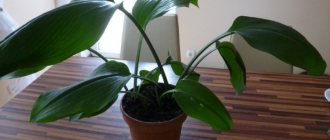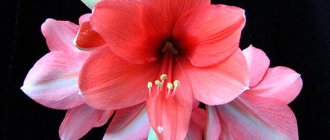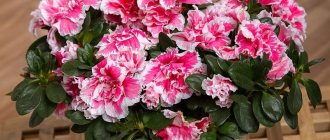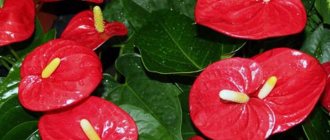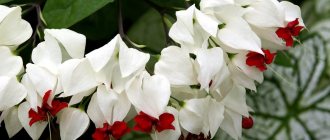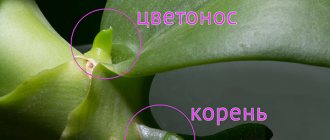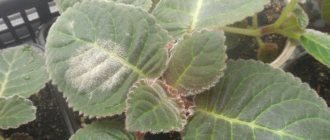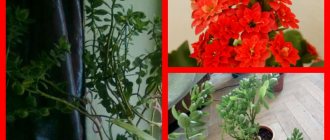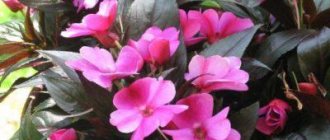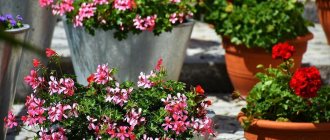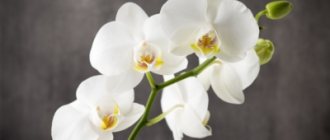Why gloxinia does not bloom: the main sources of the problem
Before you worry about the lack of buds in gloxinia, you need to find out about the period and frequency of its flowering. It pleases the eye with flowers from April to August in two stages with a break in early July. To do this, you need to cut off the remains of the buds at the end of the first stage so that it blooms again.
Lush flowering of healthy gloxinia
For your information! Young gloxinia will not bloom until it grows a tuber. If the transplant was in the spring, the first buds will appear by autumn, but may not turn into full-fledged inflorescences. Only after surviving the winter in a pot will gloxinia please the grower, during which time it has become stronger at the root.
If buds do not appear in March, it’s time to wonder why gloxinia does not bloom at home. Among the common reasons why gloxinia buds do not open:
- old age of the flower or damage during transplantation;
- soil or fertilizers are contaminated;
- irregular watering or excess watering;
- the flower was in the shade without light for a long time, it was not taken to a sunny place;
- arid microclimate with high air temperatures, being near heating radiators;
- tuber disease. It will have to be pulled out of the ground and inspected for damage;
- the use of unsuitable fertilizers or violation of the terms of their use;
- the appearance of insect pests, provoked by high humidity and the presence of diseased flowers nearby.
If a gloxinia tuber is damaged, it will spend all its energy on growing the stem and foliage, leaving no energy left for flowering.
Important! Do not transplant the tuber into a pot that is too large. The plant will grow at the root, but the outside will remain frail and dry out.
Late blight
Late blight is one of the most dangerous fungal diseases . It can spread through soil, planting equipment, contaminated planting material, and rainwater.
Infection of a plant most often occurs several months before the development of the main symptoms of the disease. The development of late blight is accompanied by the following circumstances:
- too dense soil
- stagnation of water in a flower pot
- too dense placement of plants
- using non-sterilized soil mixture
- watering the plants with rainwater and frequent spraying
- air humidity exceeding 80%
- finding gloxinia in a room with an air temperature of seventeen to twenty-two degrees above zero, which drops to ten degrees at night
The main signs of late blight include:
- the appearance on the leaves of brown spots surrounded by a pale green zone
- white mold-like coating on the inside of the leaves, which appears in wet weather
- drying of leaves in dry weather and rotting in wet weather
- the formation of dark brown stripes on stems and leaf petioles
- frequent wilting of the plant
- the appearance of ring-shaped depressions on the gloxinia trunk below the soil level
It is very difficult to cure late blight , since its causative agent does not respond to known chemicals. Therefore, the best way to combat this disease is prevention. It should consist of spraying or watering the plant with solutions of fungicides such as cuprozan, polycarbocide, zineb, polymarcin or captan. Treatment with them should be carried out during periods that may contribute to the development of the disease, and the interval between treatments should be seven days.
Why do gloxinia buds dry out without blooming and fall off?
Gloxinia - home care
Most often, the problem why gloxinia buds dry out without blooming lies in improper care. After all, if they appeared, it means that an obstacle to their further development appeared later. For example, there is a lack of nutrients, so be sure to feed the flowers in the summer. Buds usually appear at the end of March, and if in winter gloxinia was forgotten somewhere in the shade, a beautiful head of flowers is out of the question. During hibernation, it should not be left without regular watering and sunlight, as it must gain strength.
You can reanimate flowering using the following scheme of actions:
- Increase the humidity in the room (for example, turn on a humidifier).
- Ventilate the room, avoiding drafts.
- Place the flower on the eastern windowsill.
- Fertilize with phosphorus-potassium fertilizer.
- The soil after watering should be loose and slightly moist.
- Plant in another pot.
The appearance of a gloxinia bud
Dry soil, pests, stale air in the room and low humidity may also be causes. Among fertilizers, preference should be given to phosphorus-potassium fertilizers without nitrogen. It is the gradual correction of these factors that is the answer to gardeners’ worries about what to do if gloxinia’s buds dry out.
Septoria
Refers to diseases of a fungal nature . Transported by raindrops and air currents. The optimal conditions for the development of septoria are:
- keeping the plant in a room where the air temperature is from twenty to twenty-five degrees above zero, and the air humidity is at 98%;
- moistening the leaves of the plant, the duration of which exceeds forty-eight hours;
- poor lighting of the plant.
The main symptoms of septoria are the appearance of gray-brown spots on the leaves, reminiscent of rust, premature falling of leaves, bending and drying of stems and shoots. Any copper-based product or fungicide such as benomyl, mancozeb, chlorothalonil or maneb can be used to treat septoria. Treatment of the plant with one of these preparations should be carried out twice with an interval of seven to ten days.
Why do the buds turn gray and become soft?
Gloxinia from seeds at home - how and when to sow
If the flowering is abundant, there may not be enough nutrients to open the buds. It is important to remember that gloxinia itself will not bloom magnificently; it needs feeding. Pests such as spider mites or thrips may also be involved in softening the buds. To remove them, you need to wash the plant with soapy water, removing the damaged areas. Low humidity and unstable lighting are unacceptable.
Note! If the flower is in a country house or in an unheated house, it cannot be left there until frost.
It is recommended to revive the plant in the following ways:
- daylight hours for gloxinia should be at least 12 hours;
- as soon as the buds appear, a mineral complex of fertilizers with a high content of phosphorus and potassium is needed;
- if watering occurs through a tray, it is better to use two copies. Put gravel in one, expanded clay in the other;
- if gloxinia foliage stretches upward, it does not have enough sunlight;
- If it is impossible to move the flower from a place with an excess of light, you can cover it with gauze or tulle.
To prevent gloxinia from drying out, you can place a container of water next to it. If the plant has little foliage, you need to increase fertilizing with nitrogen fertilizers. This will not contribute to the blooming of gloxinia, but may be useful for the growth of green mass.
Plant varieties
Gloxinia has many different varieties, among which it is customary to distinguish terry and simple. Each variety has its own unique leaf color, and each inflorescence is unique in its shape, flowering period and brightness of the buds. Terry gloxinias have smaller flowers, and the bud itself consists of many petals, which makes the inflorescence seem voluminous and fluffy.
Kaiser Welhelm . This variety of gloxinia belongs to the terry variety and is rightfully considered one of the most beautiful varieties. Gloxinia of this species forms a bush of many large dark green leaves. A large number of leaves makes the flower bush voluminous and bushy.
Gloxinia Kaiser Wilhelm
The height of the variety does not reach 40 cm, and the diameter of the flower grows to half a meter. This variety does not bloom immediately, but only after the 3rd or 4th year of growth, and then with proper care. In general, the variety is not capricious; gloxinia grows well and quickly, forming new shoots.
Tolerates low temperatures quite well. Gloxinia blooms closer to spring. The flowers are bright purple tones with a pronounced white border along the edges of the inflorescence. It can bloom throughout the summer, gradually forming new inflorescences. The bud consists of many delicate and velvety petals.
Variety Winter Cherry . Another type of terry gloxinia is distinguished by its unusual flower color. The buds form huge snow-white inflorescences with red and burgundy dots. Winter Cherry looks very impressive, like a house plant, in compositions with other flowers or in bouquets. However, such beauty requires special attention.
winter cherry
For this variety, the correct room temperature and air humidity are important. It is worth watering the plant very carefully to avoid overwatering, but this variety of hydrangea does not tolerate drought well, the plant and buds droop. Like other varieties, it does not tolerate direct sunlight and requires a lot of fertilizer.
Flowering begins in early May and until mid-summer, gloxinia pleases with its colorful flowers. The leaves of this variety are small, dark green in color, and velvety to the touch. The stem is short, which is why the flower looks compact on the window.
Variety Cleopatra . Another representative of terry gloxinias is the Cleopatra variety. It, like many other species, was bred artificially, so it is not fussy to care for and does not require much attention. But it is impossible to leave this flower just standing on the window because of its beauty of the buds, which you always want to admire.
Gloxinia Cleopatra
Cleopatra blooms with huge buds of soft pink and almost white buds. Small splashes of red tones appear on individual inflorescences, which give the flower incredible beauty and grace. Along the edges of the bud, wavy and fuzzy edges form, it seems that they are not there, and because of this, the flowers appear even larger.
The leaves of the variety are medium-sized, dark green in color, velvety to the touch. The Cleopatra variety does not like heavy watering and direct sun. It blooms at the end of April and blooms continuously all summer. And in order for gloxinia to throw out even more inflorescences, it is important to feed the plant on time, but not to overdo it, otherwise growth will come on the leaves, not the inflorescences.
There are also more unusual varieties of tuberous gloxinia, for example, Tiny. The height of the plant is only 2.5-3 cm, the diameter of the flowers is no more than 1 cm. But, despite its size, the flower amazes with its unusual buds of various shades. The leaves of the plant are also small, dark green, velvety and soft. And this variety of gloxinia does not particularly need care, it is perfectly preserved until the next flowering and produces buds throughout the summer.
gloxinia bicolor
Why do buds turn black and rot?
Why clivia does not bloom at home - care
High nitrogen content in the soil and excess moisture are the main answers to the question of why gloxinia buds turn black. If you water a flower too often, rot will appear on the tubers and then spread to the above-ground part. Therefore, fertilizers for flowering house plants should always have a low nitrogen content.
Healthy gloxinia buds
It is also easy to explain why gloxinia withers even with the correct use of fertilizers. The answer is simple - it reacts poorly to cold weather and drafts, it is necessary to protect it from temperature changes. Its indicators should not fall below 18-20 °C on the windowsill and below 12 °C in winter if the tubers are stored in a dark place.
If the buds turn black before they bloom, you need to act quickly:
- Treat the tuber with epin. It has an anti-stress effect for plants.
- Make the air more humid; gloxinia should not dry out.
- Keep the plant away from direct sunlight during the day.
- If the soil is old, replace it with new soil.
- Adjust watering, do not water until the top layer of soil begins to dry out.
Important! Young plants overwinter in pots in their usual place; they do not need to be specially prepared for winter.
You can spray indoor gloxinia with regular warm water, but not more than 2 times a week. In this case, moisture should not get on the buds. Excessive use of the procedure will lead to rotting of the leaves and buds.
There are several ways to solve the problem of rotting before blooming:
- limit watering until the top layer of soil is completely dry;
- Water only through the tray, do not spray. Change the water in the pan;
- if the soil is too acidic (due to nitrogen), replant gloxinia with a complete replacement of the soil;
- if these measures do not help, remove and inspect the tuber: cut off the brown spots, coat the cut with activated carbon powder.
Gloxinia tuber needs proper wintering
If rot is found on tubers or foliage, you need to carefully remove the damaged areas and fertilize the plant with suitable products. There is no need to wait for the blackened bud to dry out on its own; you need to trim it yourself.
Anthracnose
Anthracnose is a fungal disease.
Its main symptoms are brown spots that suddenly appear on gloxinia leaves. Over time, the spots attack the shoots and trunk of the plant, which can cause them to rot and collapse. If anthracnose is not treated, it may well lead to the death of your pet.
Anthracnose usually attacks those plants that have mechanical damage or grow without proper care. Its development is accompanied by high air humidity and high pH levels in the soil, as well as a lack of potassium and phosphorus.
To protect gloxinia from anthracnose, it must be sprayed with oxychome, cuproxate or copper oxychloride.
Get into the habit of disinfecting all equipment after use, and also ensure that the plant does not become the target of pest attack.
If your gloxinia is heavily infested with anthracnose , you will have to destroy it to prevent the fungus from spreading to other houseplants. At the initial stage, this disease can be cured, for which it is necessary to remove parts of gloxinia affected by the fungus and subject the plant to two or three times of fungicide treatment at intervals of one and a half to three weeks.
Why do gloxinia have empty buds?
The main advantage of gloxinia is its charming flowering, which begins in June and lasts until August. That is why the plant is bought during this period to appreciate its beauty. The more beautiful the flower, the more disappointed the grower will be if the buds turn out to be empty. If it was blooming when you bought it, and then such a problem occurs, the reason why the gloxinia buds do not bloom lies in improper care.
Repeated flowering of gloxinia is not so lush
You can solve the problem as follows:
- Trim the stalk of an empty bud, otherwise a new one will not appear.
- Fertilize the plant according to plan, wait for the appearance of a new bud.
- After opening a new flower, spray gloxinia with epin according to the instructions.
The plant should be pruned only after it has finished flowering. Also, barren flowers can be a result of too dry air or pest attack. They suck the juices from the leaves and buds, thereby preventing them from opening.
Important! Do not expose gloxinia to drafts or water it with cold water. It is better to put it in bottles and let it sit for several days; this action will help release harmful substances.
Powdery mildew
Powdery mildew is a fungal . It is characterized by the appearance of a white cobweb coating on all parts of the plant, which then turns into powdery. The development of the disease is facilitated by excessive watering of the plant, sudden temperature changes, and dampness in the room. In addition, infection can occur through planting equipment. If the plant is completely affected by powdery mildew, it is advisable to destroy it. At the initial stage of the disease, spraying with any fungicide will help, which should be carried out not only for gloxinia, but also for nearby plants.
How to make gloxinia bloom again
After gloxinia fades, its above-ground part dies off, leaving only the tuber. It is important to properly prepare the plant for winter; two options are acceptable:
- place the dry tuber (previously cleaned of rot) in a pot with soil or river sand. Place in a cool place and moisturize twice a month. Avoid hypothermia;
- put the tuber in a bag with soil and vermiculite in equal proportions, store in the vegetable compartment of the refrigerator.
In February, it is necessary to transplant the tuber into a larger pot. If in April a problem arises as to why the gloxinia buds did not open, the wintering was carried out incorrectly.
After the plant has blossomed and flowered at the end of June, you can prepare it for the reappearance of the flower stalk. To do this you need to follow a simple procedure:
- Trim the foliage, leaving 2-4 lower large leaves.
- Leave a couple of the largest stepsons in the axils of the leaves.
- Feed twice during the period of appearance of stepsons, then fertilize once a month with products for flowering plants.
Important! Repeated flowering is usually not as lush as the first, and this does not mean that the flower is sick. Proper feeding will help the gloxinia buds bloom.
Blooming gloxinia is a real decoration of the windowsill, harmoniously combined with other representatives of the home flora. With improper care, problems begin with the buds, which are successfully solved by carefully correcting errors. After recovery, the flower will delight you with double lush blooms.
Suitcase Lacase, Plastic, 52 cm, 30 l
2724 ₽ More details
Drill-driver DEKO GCD12DU3 Li-ion, 1x1.5Ah, Replaceable battery, 12 V, 32 Nm, 1 battery
1697 ₽ More details
Short prom dresses
Downy mildew
Downy mildew, or peronosporosis, is a fungal disease . The development of this disease is facilitated by sharp temperature changes. Infection can also occur when watering or spraying the plant with rainwater. Downy mildew appears in the form of shapeless spots appearing on the leaves. These spots can be either pale yellow, yellow-brown, red-brown or purple, or colorless. Sometimes the spots are surrounded by a faint border. Over time they turn brown and dry out. On the inside of the leaves, islands of light powdery coating develop in parallel.
If such signs are detected, it is necessary to remove all damaged leaves from gloxinia, and then treat the plant with one of such preparations as “Abiga-pik”, “Bravo”, “Optimo”, “Previkur”, or other similar preparations.
Thrips
Thrips are the most popular type of pest that attacks gloxinia. These insects feed on the sap of the plant, which leads to its death. The main signs of thrips are light dots, streaks and spots on gloxinia leaves. If you notice such symptoms, immediately isolate the pot with gloxinia from other indoor plants and treat it with one of the insecticidal preparations. For these purposes, you can use Intavir, Aktara, Actellik, Fitoverm or Karate.
Proper care of gloxinia and keeping this plant in optimal conditions will help you avoid the appearance of any diseases and pests.
Next you can see photos of diseases and pests of Gloxinia:
Gloxinia - leaf diseases, causes, description, photos, treatment
Gloxinia is popular in indoor culture due to its abundant flowering. The birthplace of the flower is considered to be Central and South America. Despite its artificial origin, decorative gloxinia requires the same growing conditions as wild varieties. The main indicator of improper care are gloxinia leaves. They turn yellow, dry and wither, become covered with spots, and a white coating appears on the leaves of gloxinia. How to deal with gloxinia diseases. Treatment from specialists with a description of the signs of disease and detailed photos.
Flower maintenance conditions
As we found out above, the main reason why inflorescences die (rot, dry out) is violations in the care of the plant, which then entail the occurrence of a number of diseases and the appearance of pests. Therefore, in this section we will briefly consider the main points of growing gloxinia.
Location. The flower pot must be placed on the windowsills on the east and west sides. During short daylight hours, he is provided with additional lighting.
The optimal temperature for growing the plant is 18-20 degrees. Often in apartments it is a little higher, so the window sill is a good place for flowerpots.
Watering is carried out along the edge of the pot so that water does not get on the flower or through the tray (the pot is placed in water for 15-20 minutes, then the liquid is removed). Water once a week, spray once every three days with warm, soft water.
It is important to properly send the plant to rest. When the flower fades, they stop watering it, and the entire surface part dies. It must be placed in a dry and dark place where the air temperature should be between 10-18 degrees. Tubers can be stored in winter either in pots or placed in river sand. They need to be protected both from drying out and from excess moisture.
It is necessary to take into account the fact that young annual plants are not sent to rest. They spend the winter on the windowsill.
In February, adult tubers are planted in specially prepared soil and placed in a warm and bright place. The pot should be wide, but the depth should be average. The drainage layer is laid down, and then the soil. You can buy it in a store or prepare it yourself. Considering any gloxinia to loose and pH-neutral soil.
These are the key points that novice gardeners should know so that the capricious and demanding plant pleases the eye.
